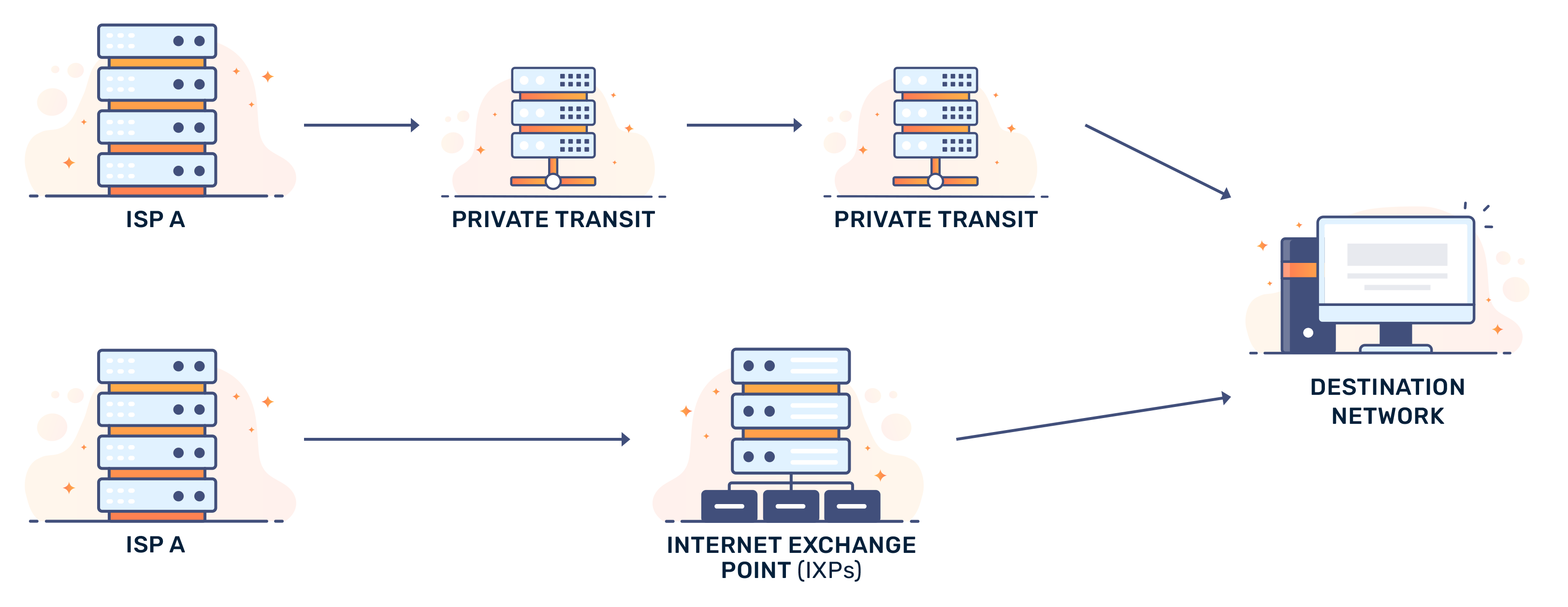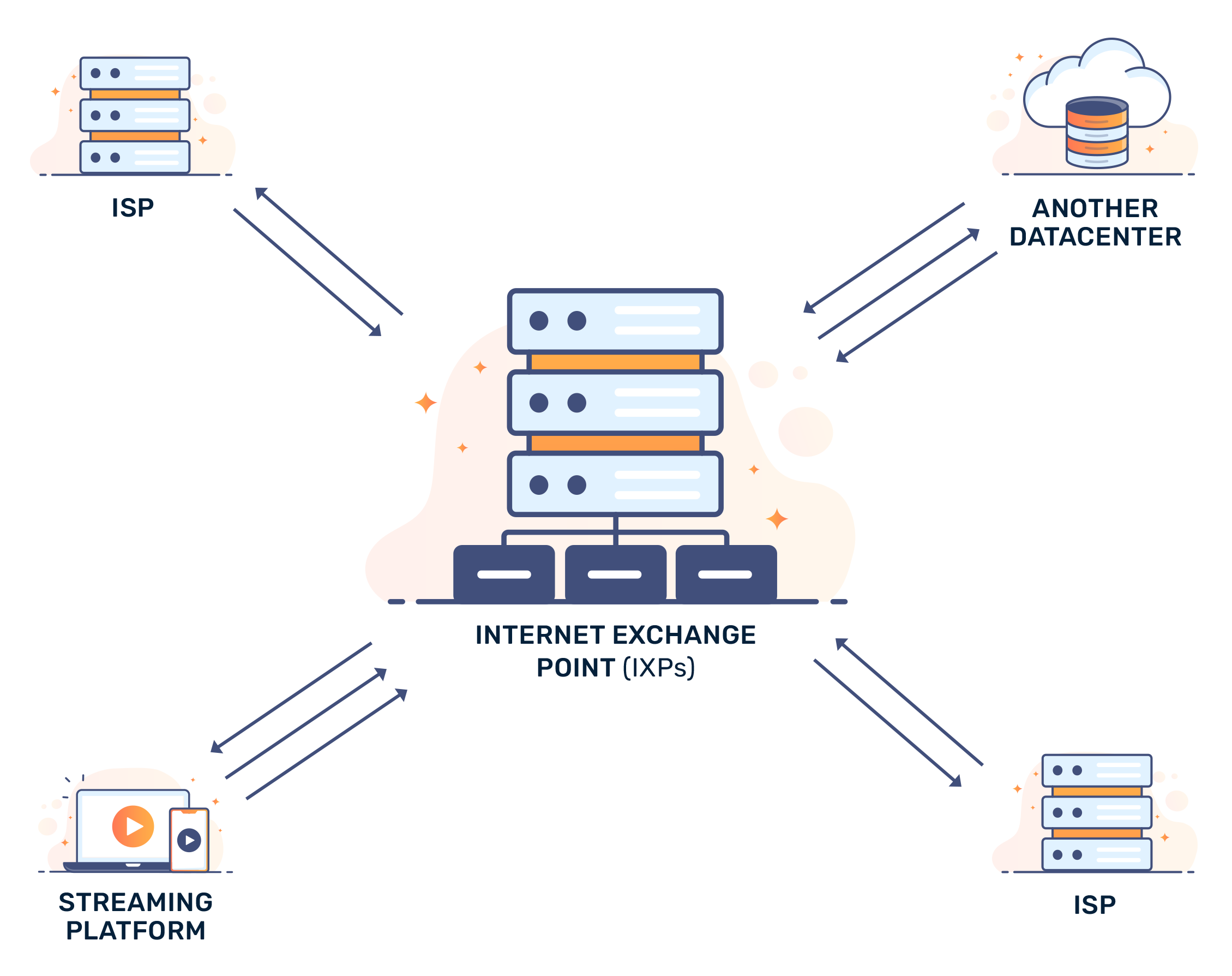Internet Exchange Points (IXPs)
What are they?
Internet Exchange Points (IXPs) are an area where multiple networks meet. They operate using Border Gateway Protocol (BGP). Whether this is done to save costs or to provide better throughput for users, IXPs are crucial to a fast and reliable internet.
For example, if a CDN provider serves a lot of bandwidth, it is beneficial to meet Internet Service Providers (ISPs) at a shared location where networks are more directly connected to end-users’ networks. In this example, benefits to the CDN provider include lower bandwidth costs and users generally receive faster experiences compared to being routed over multiple different networks.

In the above image, "ISP A" has a longer path to the destination. This can be costly for the ISP and the "Destination Network." However, when examining the second network path from "ISP A," it is clear that a near-direct, shorter path to the destination is superior in possible performance and latency.
However, this is not always the case. Networks that are directly connected to one another (also known as an interconnect) have essentially no choke points aside from the port itself. Whether any particular network has other private or public peering arrangements, a problem still arises: not being able to optimally connect with every network possible. This is where IXPs help by allowing many networks to connect with each other, at a single point, through a switch (layer 2 of the OSI model).
How do Internet Exchange Points work?
IXPs are literally a point of exchange. Similar to a series of companies working around the same "room," IXPs are most commonly placed inside of a data-center, although they can be any place where multiple networks meet:

As seen in the example above, a large amount of information is flowing between content or data heavy platforms and consumers within an exchange point. Exchanges operate on the idea that individual networks can control where traffic flows. In the case above, the path between the exchange and any two networks is shorter than a route that goes over 3rd-party networks.
In more technical terms, Internet Exchange Points are a series of networks connected at a central point by some form of switching hardware. Networks connected to an exchange avoid intermediate networks, reducing both potential bottlenecks and latency. Individual networks can also connect at various bandwidth levels, often set by a variety of factors: from the total number of customers, to predicted traffic levels.
Conclusion
IXPs exist for one purpose: to join multiple networks together by a large switching plane. Granular path control at an exchange point allows for the optimal path for traffic destined to another network on the exchange.
While the general concept of an Internet Exchange Point is simple, their benefits cannot be understated. Not only do they save large amounts of bandwidth flowing through other, possibly congested intermediary networks, they are both fundamental and essential to the smooth operation of a reliable and open internet.
